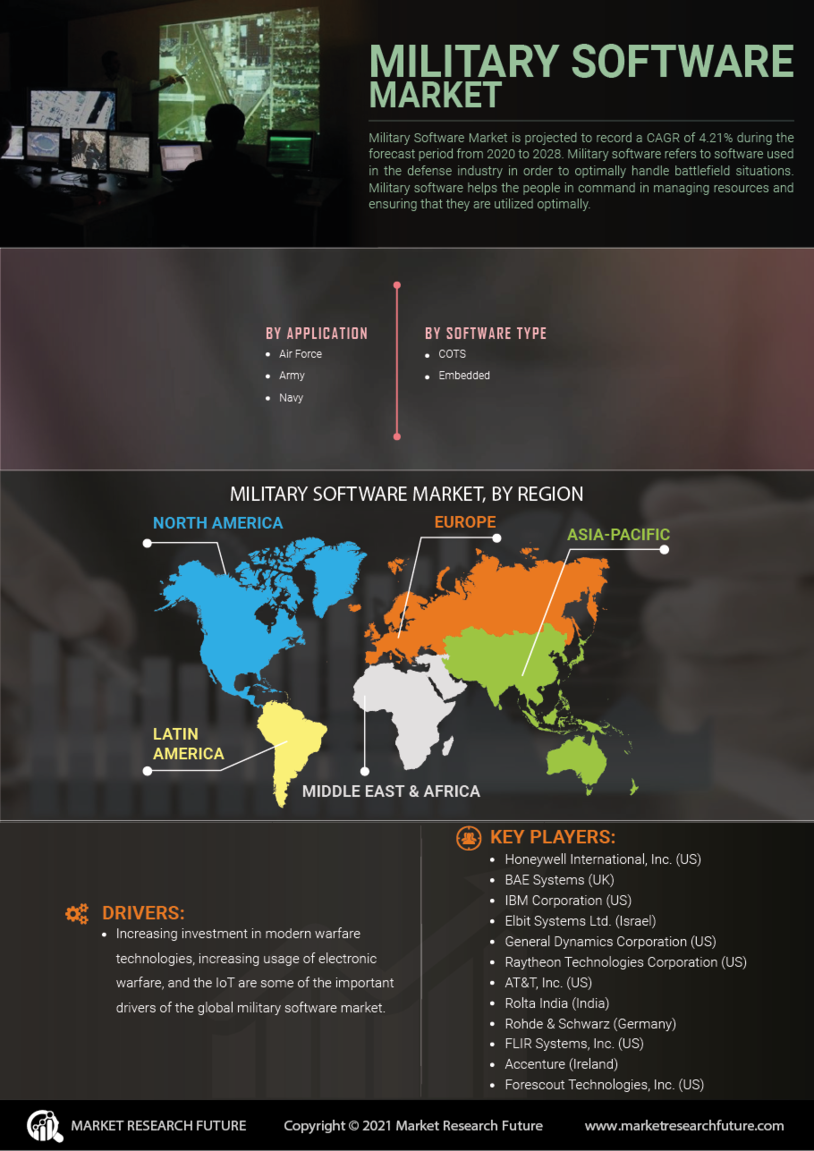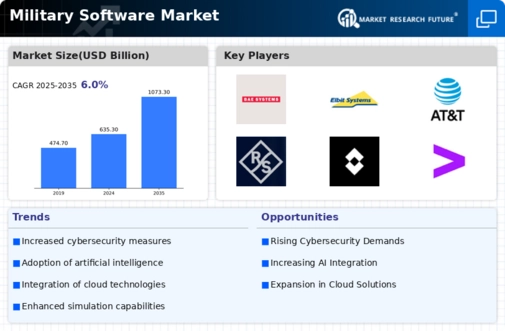Increased Defense Budgets
The Military Software Market is experiencing a notable surge in demand, primarily driven by increased defense budgets across various nations. Governments are allocating substantial resources to modernize their military capabilities, which includes investing in advanced software solutions. For instance, recent reports indicate that defense spending is projected to grow at a compound annual growth rate of approximately 3.5% over the next five years. This trend suggests that military organizations are prioritizing software that enhances operational efficiency, data analysis, and strategic planning. As nations seek to maintain a competitive edge, the emphasis on sophisticated military software solutions is likely to intensify, thereby propelling market growth.
Technological Advancements
Technological advancements play a pivotal role in shaping the Military Software Market. Innovations in areas such as artificial intelligence, machine learning, and data analytics are transforming how military operations are conducted. The integration of these technologies into military software solutions enhances decision-making processes and operational effectiveness. For example, the use of predictive analytics in military software can significantly improve logistics and resource allocation. As technology continues to evolve, military organizations are increasingly adopting software that leverages these advancements, which is expected to drive market growth. The ongoing development of next-generation software solutions indicates a robust future for the Military Software Market.
Rising Cybersecurity Threats
The Military Software Market is significantly influenced by the rising threats to cybersecurity. As military operations become more reliant on digital platforms, the potential for cyberattacks increases, necessitating the development of robust cybersecurity software. Recent statistics reveal that cyber threats targeting military systems have escalated, prompting defense agencies to invest heavily in cybersecurity solutions. This trend indicates a growing recognition of the importance of safeguarding sensitive information and maintaining operational integrity. Consequently, military software that incorporates advanced cybersecurity measures is in high demand, suggesting a strong correlation between cybersecurity concerns and market growth.
Interoperability Requirements
Interoperability requirements are becoming increasingly critical within the Military Software Market. As military forces collaborate more frequently with allied nations, the need for software solutions that can seamlessly integrate with various systems is paramount. This demand for interoperability drives the development of software that can communicate effectively across different platforms and technologies. Recent initiatives aimed at enhancing joint operations highlight the importance of compatible software solutions. As military organizations strive for cohesive operations, the focus on interoperability is expected to propel the growth of the Military Software Market, as stakeholders seek solutions that facilitate collaboration and information sharing.
Focus on Data-Driven Decision Making
The emphasis on data-driven decision making is reshaping the Military Software Market. Military organizations are increasingly recognizing the value of data analytics in enhancing operational efficiency and strategic planning. The ability to analyze vast amounts of data in real-time allows military leaders to make informed decisions quickly. This trend is reflected in the growing adoption of software solutions that facilitate data collection, analysis, and visualization. As military operations become more complex, the demand for software that supports data-driven approaches is likely to rise, indicating a significant opportunity for growth within the Military Software Market.


















Leave a Comment